The Girlfriend and I were out in the backyard early this evening and we spotted a red wasp with deep blue wings skimming close to the ground right near out feet, and quickly discovered why, as a fishing spider suddenly broke its camouflage by scampering off madly. It was clear that the wasp was one of the spider hunting varieties, and had just missed nailing the fishing spider. I bent down and identified the spider, then shooed it off from the immediate location so the returning wasp would have a hard(er) time locating it again.
This was all for naught, because within a few minutes we saw the wasp again, practically right under the lawn chair that I was sitting in, and it had located the spider. The wasp flew off from our proximity, but it was too late for the spider. I ran and got the camera but didn’t have time to mess with the macro flash rig, so all photos are with the popup flash on the camera.
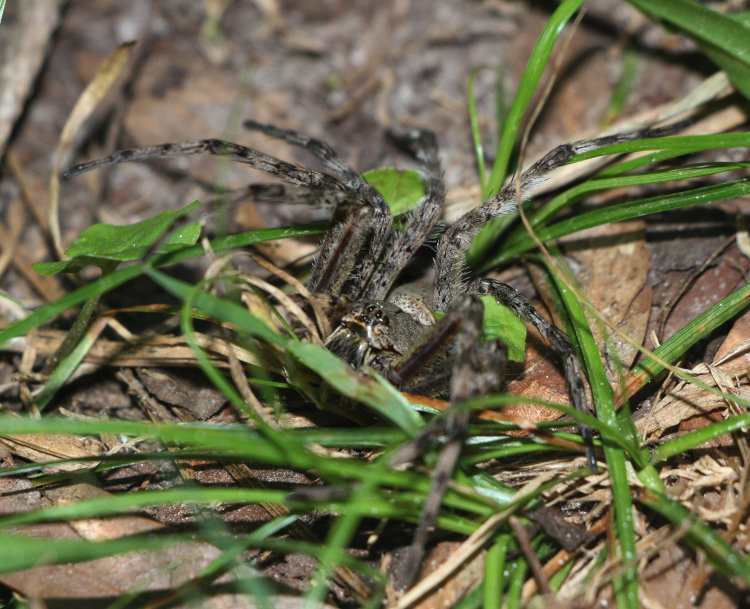
This is a dark fishing spider (Dolomedes tenebrosus,) about mid-sized in the range that they can be found as adults, so, 40-50mm in leg spread. I examined it and prodded it gently, finding that it wasn’t completely paralyzed, but could only manage feeble movements of the legs.
Here’s the deal: several different species of wasp, specifically the Family of Pompilidae or spider wasps, paralyze spiders with their sting and carry the still-living spider back to their nests, where eggs are laid within the spider’s body cavity, then the spider sealed up in a nursery cocoon. The eggs hatch out, and the wasp larvae feed on the spider in their initial stages before they dig their way out of the spider and then the nursery. The tube nests of mud that are often found under overhangs and within sheds are from one such wasp species, and I’ve long wanted to capture the act of one bringing a spider back to enclose it within the nursery. I was pretty certain the wasp would return for its prey, so I waited.
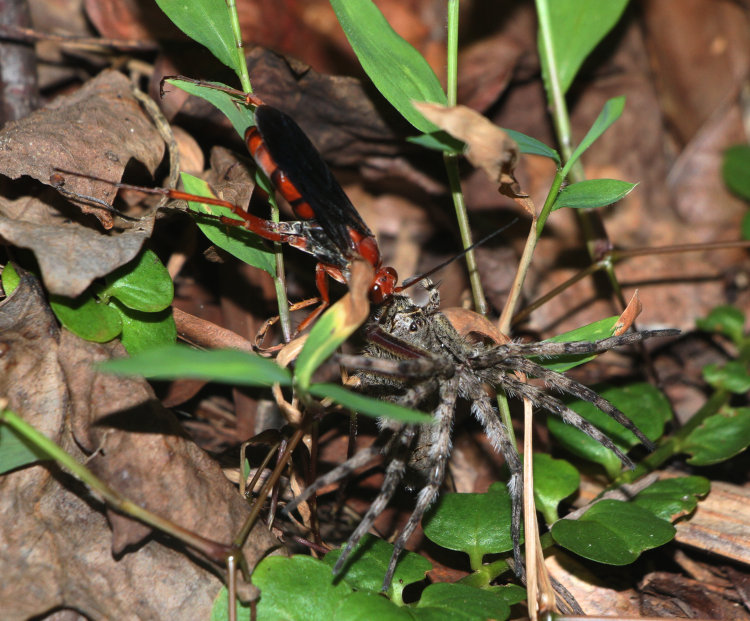
Sure enough, it was back within minutes, and quickly seized the spider and began dragging it backwards across the lawn. I thought it would simply gather the spider off and fly away with it, but surmised that the burrow was nearby and this was a waste of time. This was wrong, as it turned out.
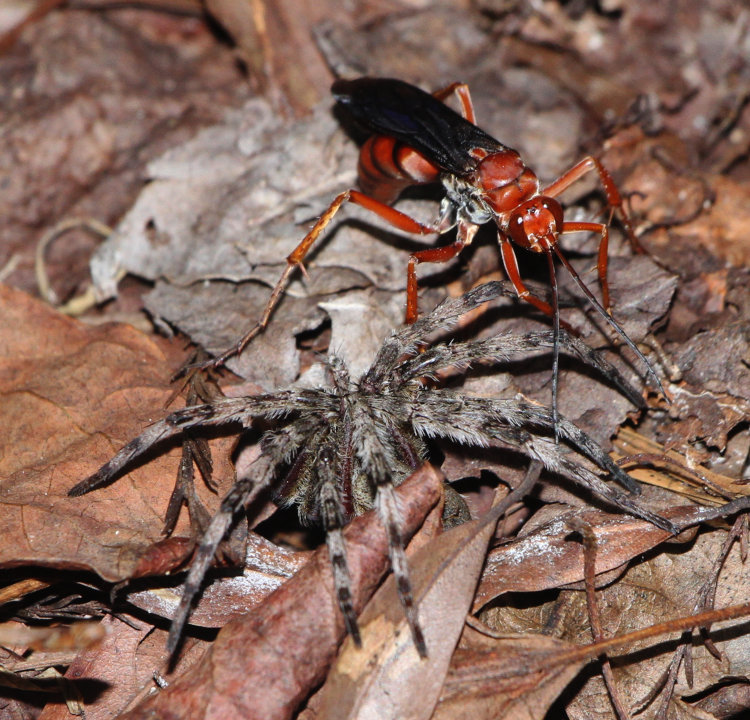
After much playing around on BugGuide.net, I find it likely that this is a rusty spider wasp (Tachypompilus ferrugineus ferrugineus,) based on several esoteric details that I first had to look up to understand, then flip through several images to get a good enough view of. When you get:
T. f. ferrugineus is an eastern subspecies with black typically on the sternum, propodeum, and hind coxae
… and you don’t know what a propodeum or coxa is, then you go looking to find out just so you can then locate those within your photos and see if they match. Long story short: the dark base of the four hind legs, though it looks pretty bright here in the direct flash, are those key features – they’re not red like the rest of the body, so probably T. f. ferrugineus.

From time to time the wasp would fly off, probably because I was getting too close, though it never tried directly bothering me. It would return in a minute, examine the spider closely for a good spot to seize it, then resume its journey.
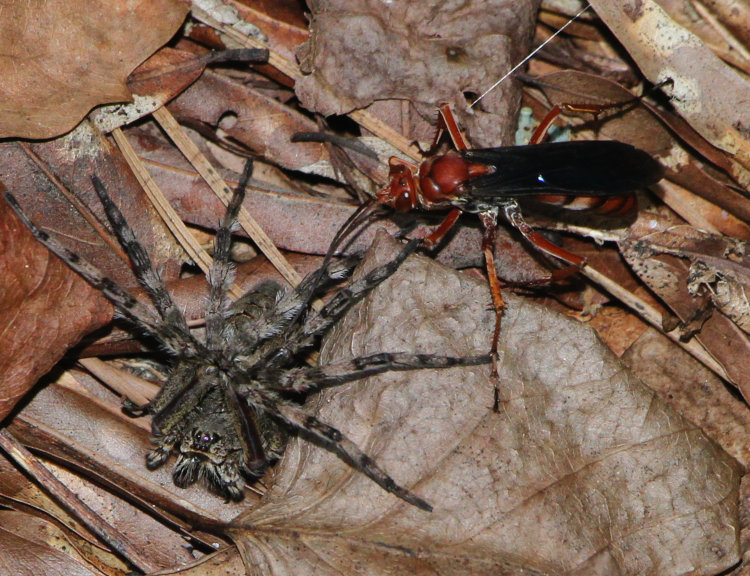
The trek actually got quite impressive, since the wasp dragged the spider backwards through the leafy debris along the edge of the deck for several meters while I kept it in sight. I even shot a little video, but the constant movement under the non-autofocusing video function of the Canon 7D meant that I was trying to maintain focus as distances changed perpetually, and it wasn’t worth the effort to put up.
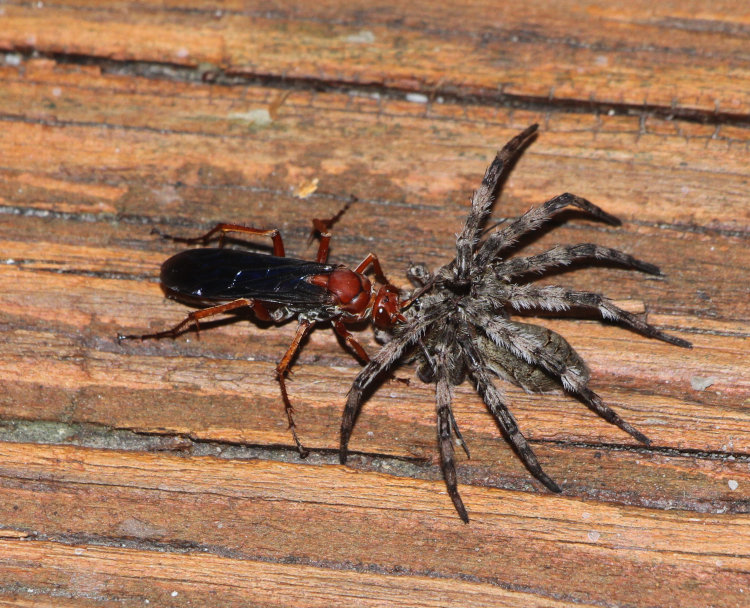
The wasp brought the spider all the way to the deck steps, vertically up the sides (still backwards,) and across the top, then over to the molding on the enclosed porch.
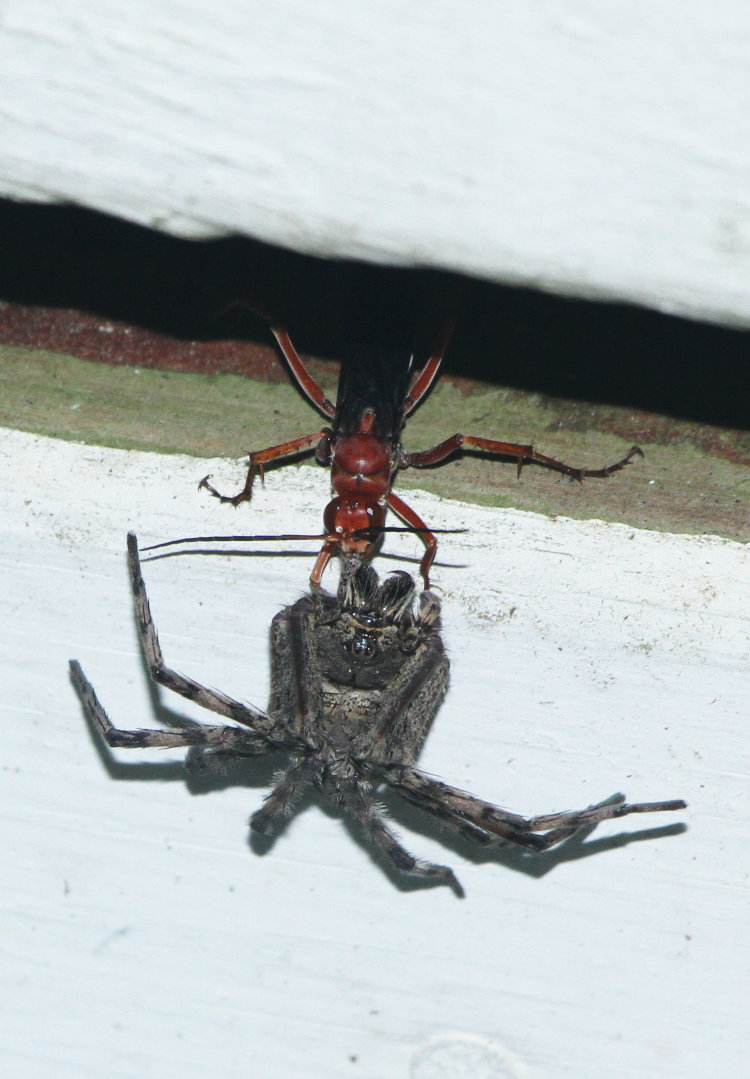
And then, began scaling the molding vertically along the corner. You can see in this image that one of the spider’s fangs are extended, so this doesn’t seem to be the most prudent place for the wasp to grab the spider, but no issues occurred as I watched.
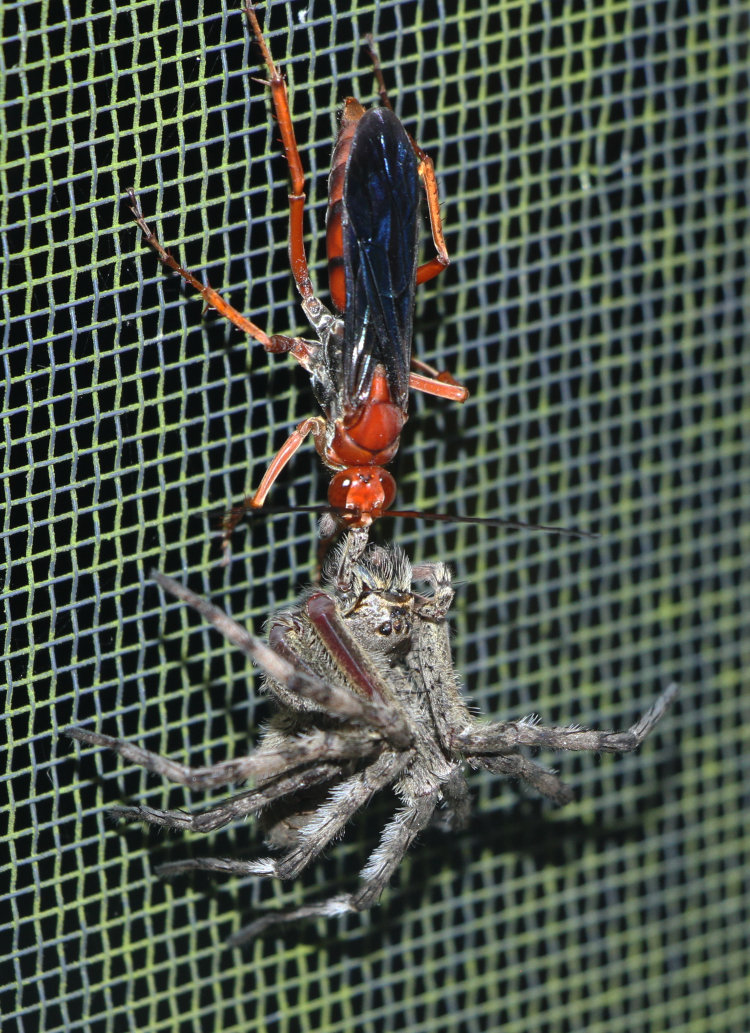
And I couldn’t watch a whole lot longer, since the wasp took the spider straight up the screen to the roofline, then struggled with the sharp overhang there and began shifting sideways to find better purchase. This was now getting out of easy reach of the lens and flash, save for getting a stepladder, and I still had no idea where the wasp was heading with its quarry, so I let it go at this point. Still, it had gone at least ten meters, horizontally and vertically – it was putting in the effort at least. Quite impressive to watch.



















































